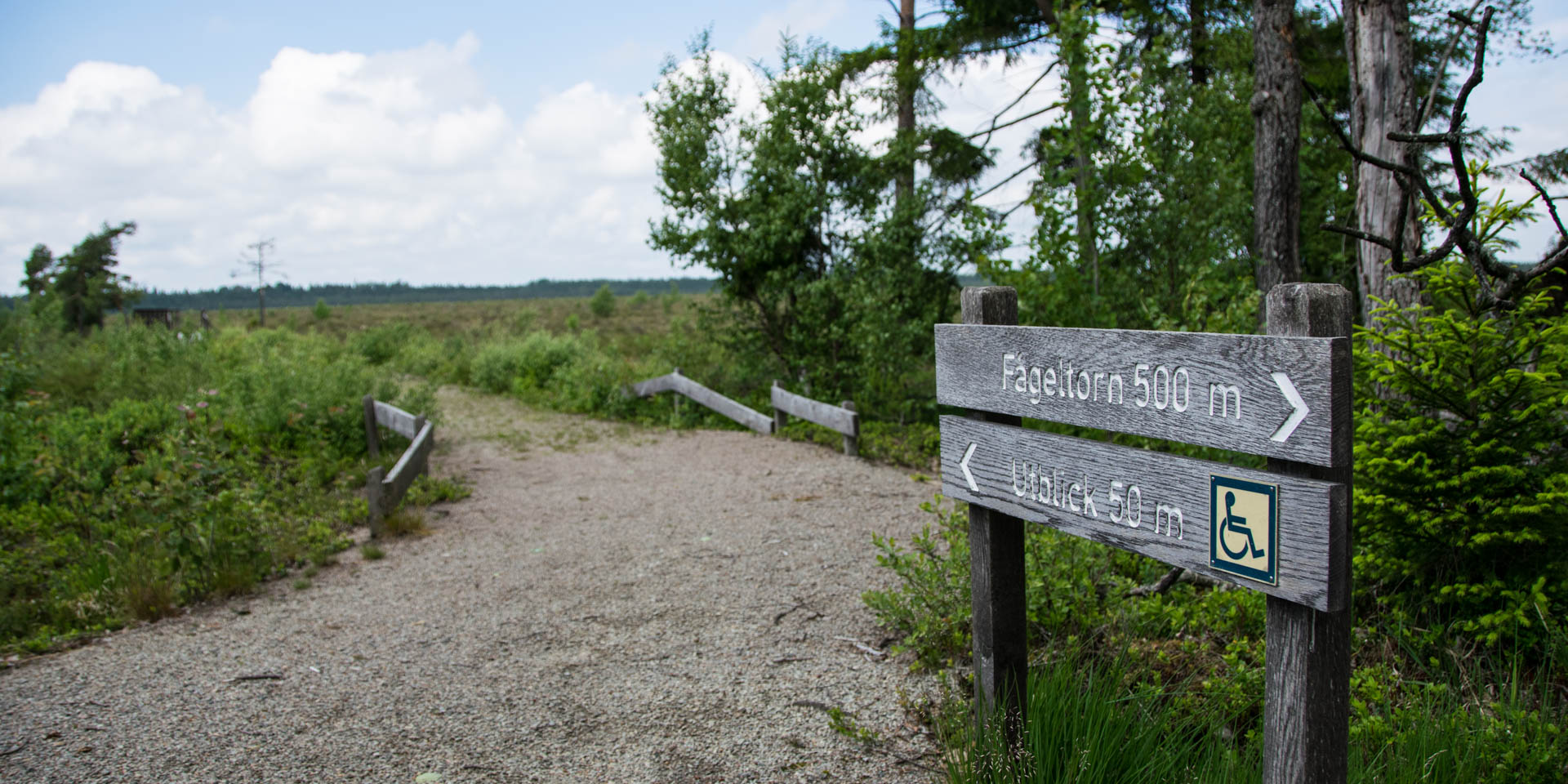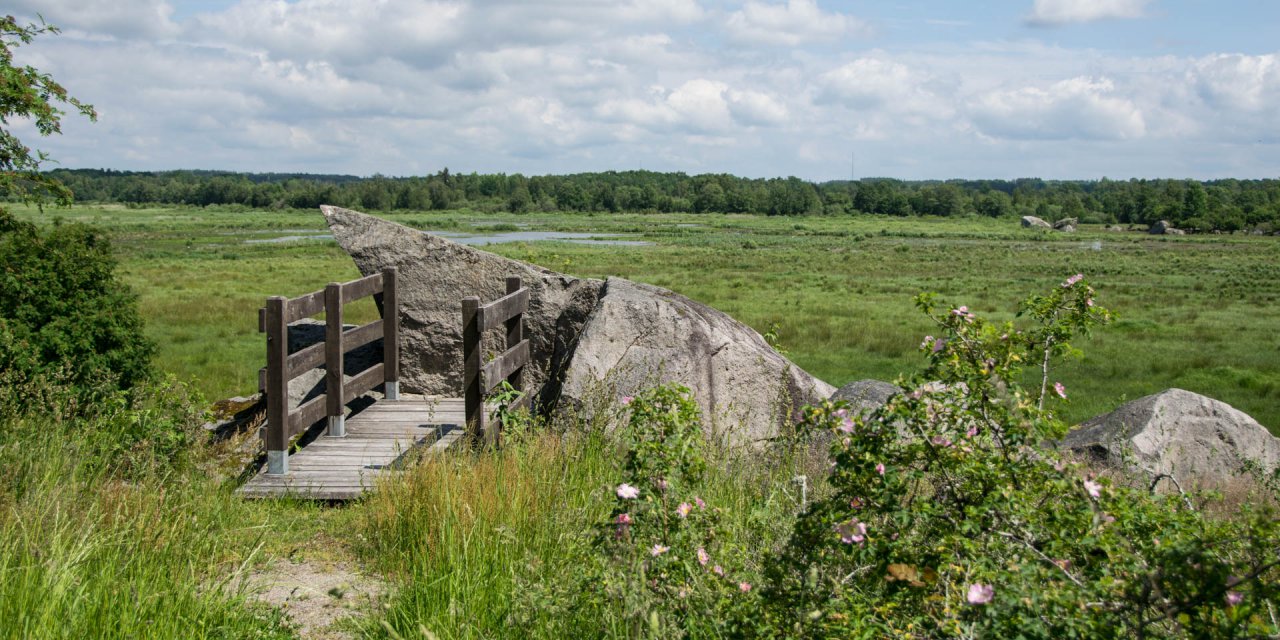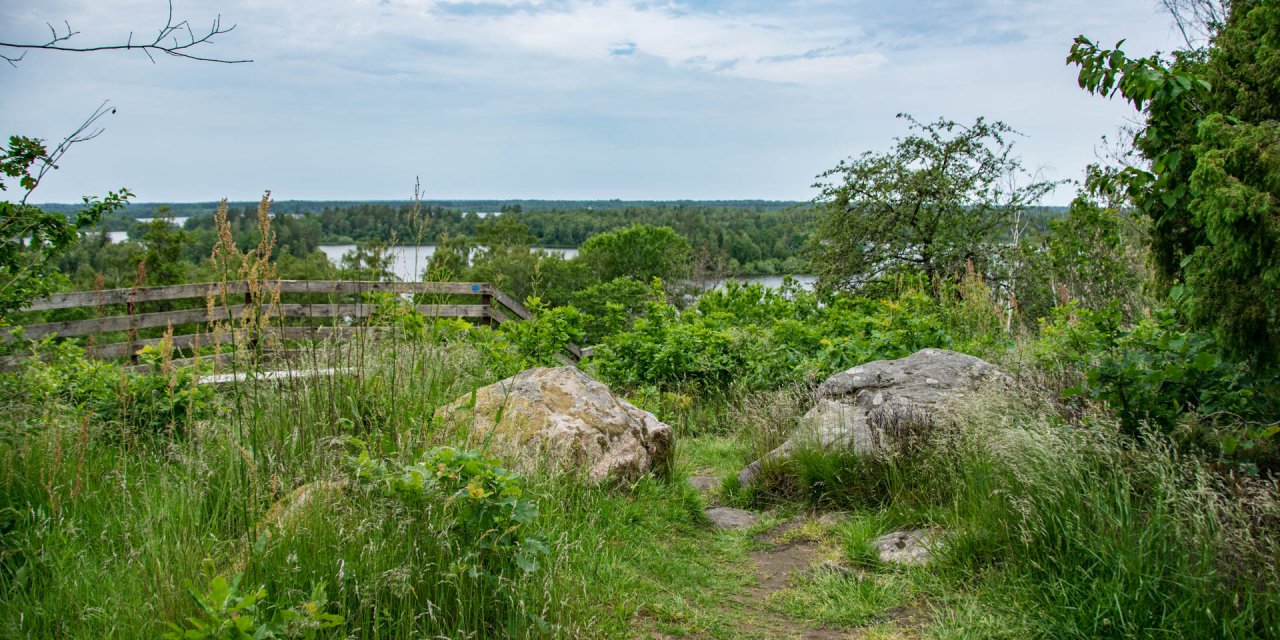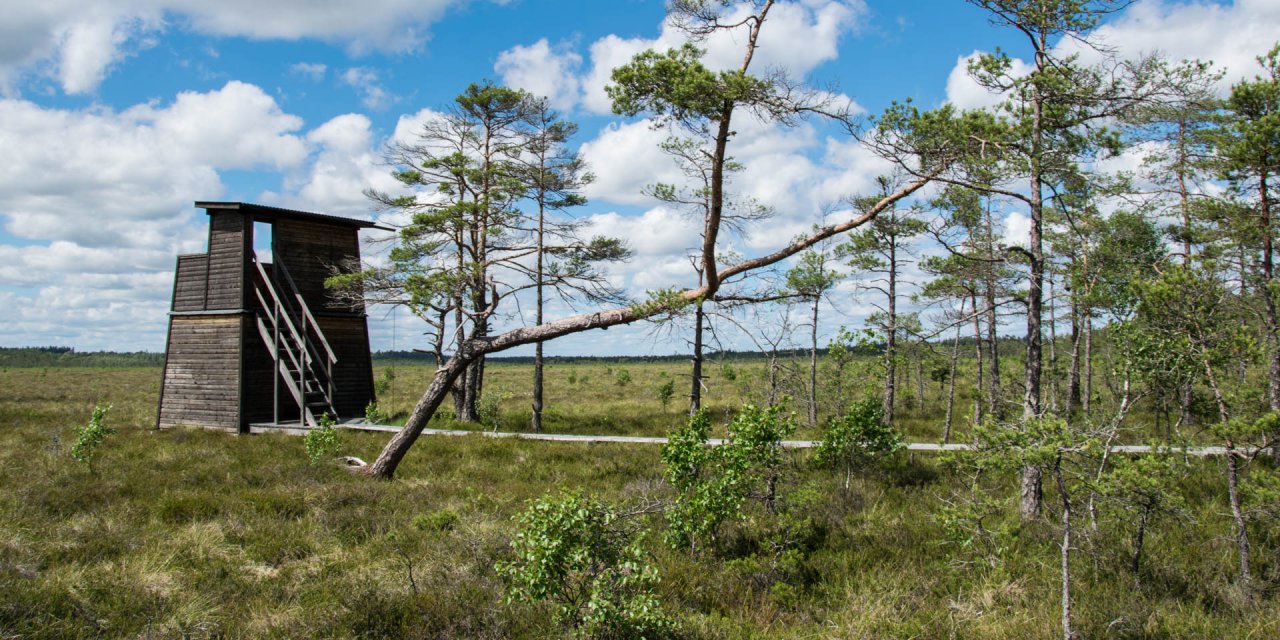

Taglamyrens Naturreservat
Untouched moor near Grimslöv
The nature reserve Taglamyrens Natureservat is located in the southern half of the municipality of Alvesta, about ten kilometres west of Grimslöv and protects one of the few southern Swedish moors that has remained untouched by human influence.
Taglamyrene Natureservat has a total area of 390 hectares and extends completely over the open wide moorland of the Taglamyren, whose original wilderness character has been preserved and has never been affected by peat cutting or drainage.
The raised bog Taglamyren
Taglamyren is an raised bog, whose water balance is entirely supplied by natural precipitation. The unspoiled moor consists of a veritable mosaic of different biotopes, ranging from plateaus with dry grass tufts, to fluctuating areas with dense vegetation of peat moss, to water holes, especially on the edges of the moor.
The nutrient-poor bog areas are mainly populated by different species of peat mosses of different colours, accompanied by stands of cross-leaved heath (Erica tetralix) and scattered dwarf birches (Betula nana). At the more nutritious water holes, different species of sedge (Carex), the rare bog asphodel (Narthecium ossifragum) and bogbean (Menyanthes) can be found.
The bog is also the home of numerous specialized insect species as well as a retreat and breeding ground for interesting bird species. Early in the morning in spring, the rolling calls of the black grouse can be heard during courtship, later the loud mating calls of the cranes resound across the vast area, and in early summer the European golden plover (Pluvialis apricaria), which is almost extinct in Central Europe, breeds.
Discover Taglamyrens Natureservat
Taglamyren is surrounded on its edges by a dense belt of pine forest and on its southern side a flat ground moraine of solid boulders extends like a headland several hundred meters deep into the bog. The parking lot of the nature reserve is located there, near to a lookout point, which is also accessible with a wheelchair. From there, a trail leads over narrow paths and planks further north, where after approximately 500 metres you reach a observation tower, which offers a good view over the western half of the moor and from which longer bird watching is possible.



